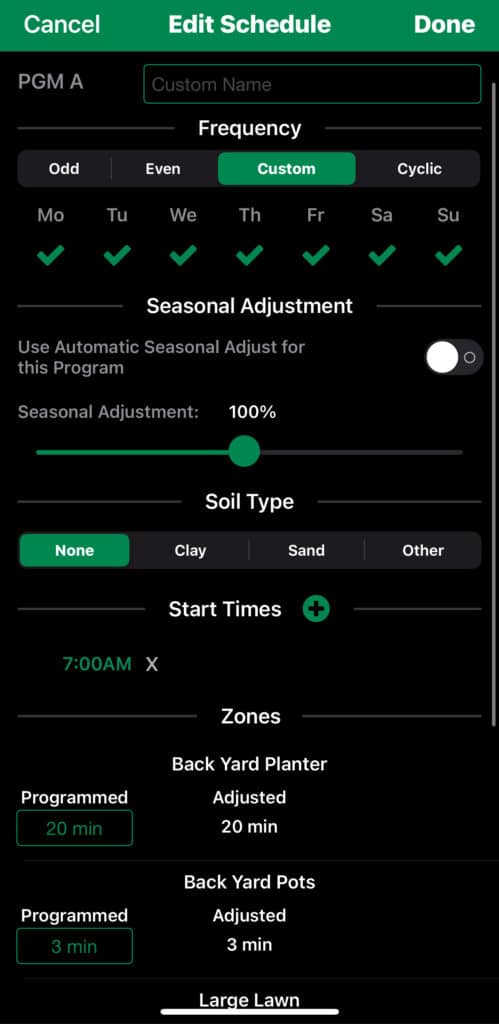Keeping your lawn green and your flowers looking beautiful can be a difficult task during the summer. Installing a smart irrigation timer is the first step to solving this problem. Smart irrigation timers are designed to work with your smartphone so that you can easily control how much water is used in your yard. It’s connected via WiFi so it has access to the nearest weather station from your location. This allows it to predict the temperature, rain probability, wind, and humidity… providing you with the right amount of watering required to meet your yards needs.
Choosing the Right Timer
With so many options out there, choosing the right timer can be difficult. Many homeowners feel like the Rachio timers are best. They claim to have an easy-to-use app and are easy to install. As professional landscapers, we at Groundcare Landscape like the Hunter timers best for our day-to-day operations. Hunter’s Hydrawise app allows us to manage different accounts simultaneously.
User Interface
All smart timers are designed to interface with an app on your smartphone. When installing the controller, be sure to install it within WiFi range. This allows it to access the nearest weather station from your location. Within the app, you can control the watering. You can change the schedule, turn off watering, add or remove a zone, and check how much water your yard is using. If you add certain sensors to the timer, it can also alert you of a broken valve or burnt solenoid. All of this is designed to help you save water and energy.

Sensors
Even though smart timers are climate-based and controlled via WiFi, it’s still a good idea to add sensors to your system. Weather predictions are just that… predictions. With a smart timer, if rain is in the forecast the timer will turn off the irrigation – whether it rains or not. Adding sensors to your smart timer will take your irrigation to the next level and prevent both underwatering and overwatering.
There are three types of sensors to consider. They are:
- Rain sensors: Detect rainfall and shut the irrigation off until it’s dry. This prevents overwatering.
- Flow sensors/meter: Measure how slowly or quickly water is flowing through your system and sends that information to the controller. This helps detect leaks or change in flow.
- Moisture sensors: Provide real-time soil moisture analysis so that your system only waters when needed.
DWP Rebate
The Department of Water and Power has great incentives to replace your old timer with a smart timer. If you don’t already have a smart controller, or want to update the one you have, visit https://socalwatersmart.com/en/residential/rebates/available-rebates/irrigation-controllers/ to learn more about available rebates. When looking at replacement types, be sure to select a timer with the number of stations that you need. Also be sure it has the connectivity range required from your router to where you’re going to install it.
Smart timers are the way of the future. If you need help installing one or programming it for optimal water savings, give us a call! One of our Certified Irrigation technicians can take care of it. Contact us to set up an appointment.





